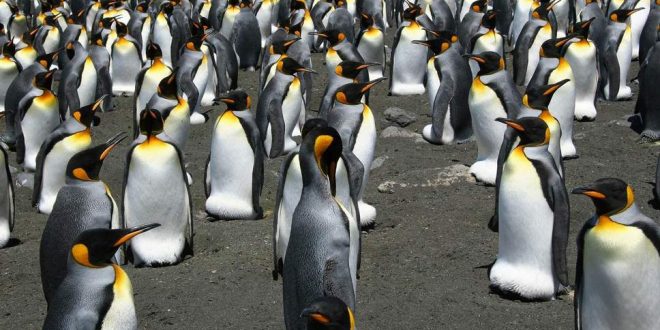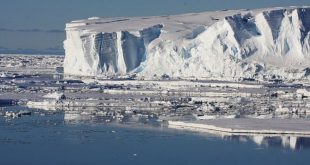Number of pairs has fallen from 500,000 in the 1980s, to just 60,000 by 2017
The world’s largest colony of king penguins has collapsed by almost 90 per cent over the last 35 years, new research indicates.
Aerial and satellite images of the colony living on the remote subantarctic island of Île aux Cochons, in the southern Indian Ocean, suggests the number of penguins has fallen from around 500,000 pairs in the 1980s, to just 60,000 pairs in photographs taken in 2015 and 2017.
Until now, it was regarded as the second-largest colony of penguins in the world, after one on Zavodovski Island in the South Sandwich Islands, where the slopes of an active volcano are home to around two million chinstrap penguins.
Scientists have not yet identified why the population of king penguins on Île aux Cochons has shrunk so dramatically, but they noted that it is not possible for the birds have migrated elsewhere, as there are no other islands suitable for them to inhabit within striking distance.
In a paper published in the journal Antarctic Science, the authors say “possible causes were explored but no plausible explanation for such an unprecedented decrease in penguin populations was found”.
Satellite imagery shows the extent of the penguins’ breeding area, on bare flat ground, has also reduced significantly as vegetation has recolonised the stony ground.
Though they remain unsure of the cause, the team has suggested several possible hypothesis for the “massive decline”.
The first relates to the Indian Ocean Dipole, a weather phenomenon which affects ocean temperatures, local atmosphere and rainfall. In 1997 a particularly strong event may have sent fish and squid further south, affecting the foraging capacities of the penguins, leading to poor breeding performance from which the colony has struggled to recover.
The Dipole is closely associated with El Niño events, which have been amplified by global warming.
Another theory is that the decline may have been spurred by a partial relocation of the colony from a large group on one part of the island, to a smaller, beach-based colony, first observed in 1995.
Though the paper notes that the size of this newer population – 17,000 pairs – accounts only for a fraction of the original colony.
Third, feral cats and house mice, known to be present on the Île aux Cochons, may have changed their behaviour and may have begun to attack penguin chicks. This behavioural change has been observed in the past, where mice and cats were recorded beginning to target albatross chicks.
The fourth hypothesis is that diseases or parasites which affect various species of seabirds could have hit the colony, reducing breeding success, the survival of adults and population growth rates.
However, the paper says that the extent of the collapse would be unprecedented if it were the result of disease outbreak.
The last human visit to the island was back in 1982, and the team is now planning to return to study the causes for the decline.
The Independent
 Lebanese Ministry of Information
Lebanese Ministry of Information



